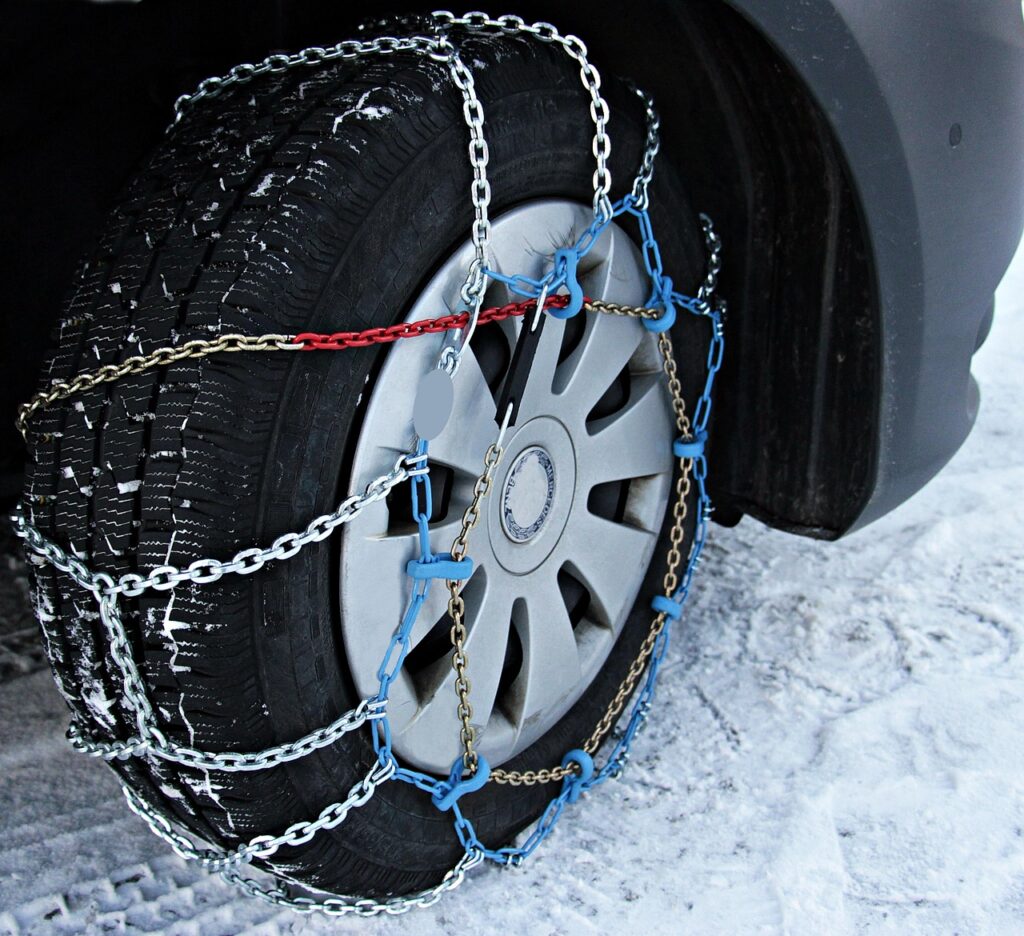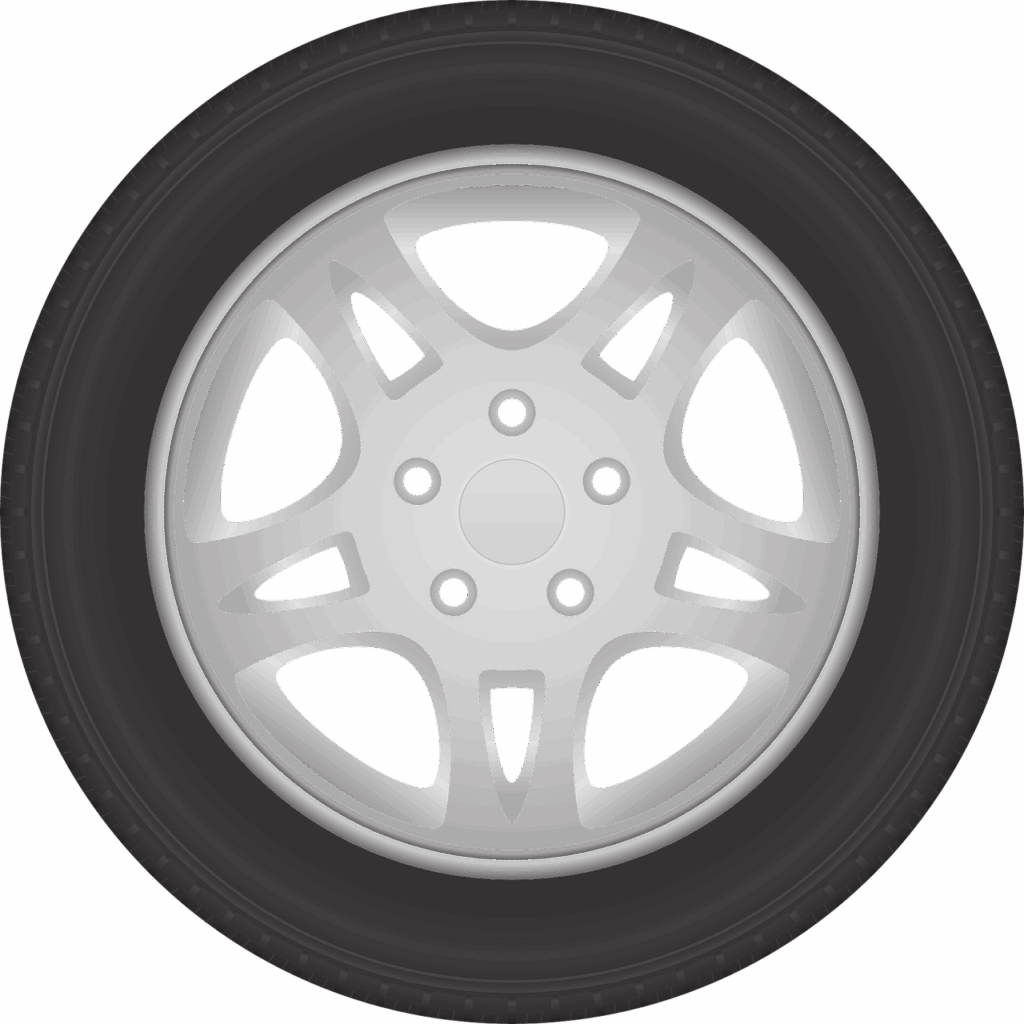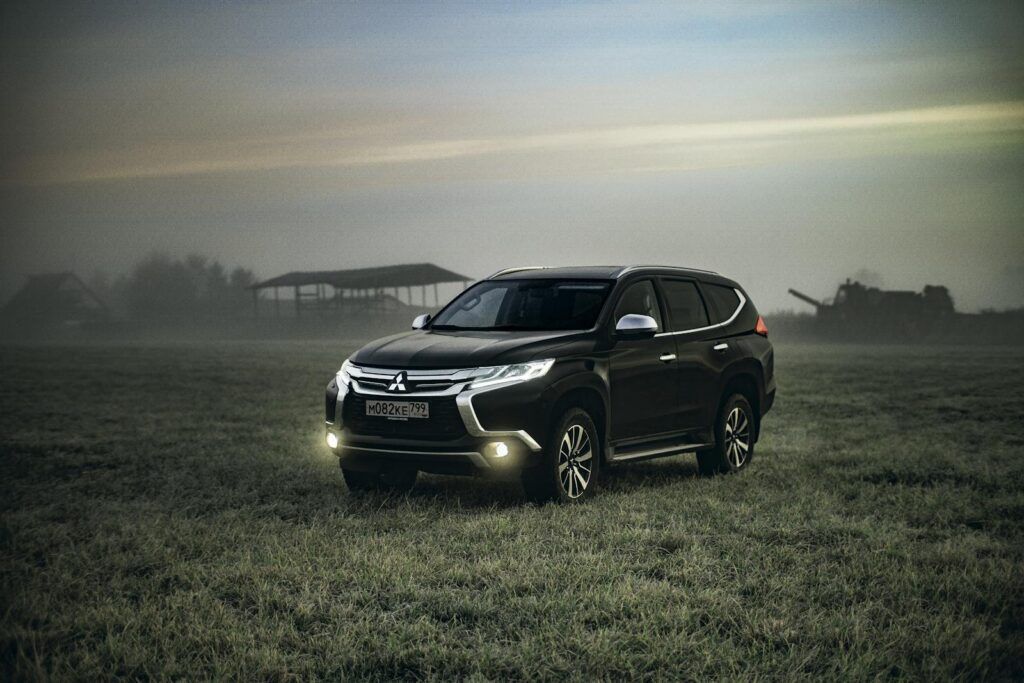One of the most dangerous driving situations during the winter is a car that slides on a road with ice or snow. In locations like Wisconsin, it’s not uncommon to see vehicles slide into the ditch, especially during the first snowstorm of the year when drivers may be less accustomed to winter conditions. These slides, often referred to as fishtailing, highlight a critical safety concern that all drivers should address proactively.
Driving on icy roads represents one of the most hazardous activities undertaken with a vehicle. Winter weather introduces a range of risks, from cars struggling to start to batteries failing unexpectedly. However, the most immediate and devastating threat often comes from ice, which can drastically reduce tire traction and lead to dangerous skidding. Understanding how to prevent and respond to these situations is paramount for ensuring personal safety and the integrity of your vehicle.
This comprehensive guide compiles 12 essential tips to help drivers navigate icy roads with greater confidence and control. The best approach to preventing a car from sliding on ice is to avoid such conditions entirely. When that is not feasible, the key lies in driving very smoothly and slowly, limiting speed, and exercising fluidity in all steering, acceleration, and braking maneuvers. Adopting these practices and preparing your vehicle can significantly reduce the likelihood of a dangerous slide.

1. **Prioritize Not Driving at All**
The most effective strategy for preventing a car from sliding on ice is to simply avoid driving when conditions are hazardous. While this might be easier said than done, especially if facing an emergency or a situation where being stranded is not an option, making the conscious choice to not drive should always be the priority when possible. No matter how well you prepare or how skillfully you drive, the inherent risks of ice remain.
Before starting your car, it is advisable to consider if there is any alternative to driving. This involves asking critical questions: Can your plans be postponed? Is it possible to work remotely or skip the intended activity? Choosing not to drive at all can eliminate the risk of sliding, which could otherwise lead to significant vehicle damage or even a total loss.
Furthermore, it is prudent to actively avoid driving in snow, rain, or extremely cold conditions if the forecast suggests ice is a possibility. A simple check of the weather before any trip can provide crucial information, allowing you to make an informed decision about whether to venture out. By doing so, you minimize exposure to the very element that poses the greatest threat to traction.
Read more about: Tricolor’s $200M Fraud: Unpacking the Collapse of a Subprime Auto Giant and Its Ripple Effects on US Banking
2. **Invest in Snow Tires**
For drivers residing in colder regions, investing in snow tires is generally a sound decision. These specialized seasonal tires are engineered to provide enhanced grip on icy and snowy roads. Their unique composition and tread patterns enable a car to maintain some level of traction, even when encountering patches of asphalt through ice and snow. This additional grip can make a substantial difference in vehicle control.
Winter tires are specifically designed to resist hardening in low temperatures. Unlike all-season tires, which can become stiff and lose effectiveness in the cold, winter tires remain pliable, ensuring better adherence to the road surface. This characteristic is vital for improved traction not only on ice and snow but also on dry pavement during cold weather.
The usage of snow tires follows a seasonal cycle. Typically, these tires can be installed in November or December and then removed once winter has passed, to be stored in a garage or basement until the next cold season. This practice ensures that your vehicle is equipped with the optimal tire type for the specific challenges presented by winter driving, enhancing overall safety and performance.
Read more about: Don’t Waste Your Money: 14 Walmart Buys That Experts Say to Skip (and What to Choose Instead)
3. **Choose Main Roads Over Back Roads**
A strategic decision for winter driving involves prioritizing main roads and highways over back roads. Main thoroughfares benefit from a constant flow of traffic, meaning that numerous cars driving over them help to warm the road surface. This continuous activity can keep the road warm enough to melt away accumulated ice, significantly reducing slippery conditions.
In contrast, back roads often lack this crucial advantage. They typically experience far less traffic, preventing the warming effect that helps dissipate ice. Consequently, back roads are notoriously problematic for black ice, a particularly dangerous form of ice that is transparent and nearly invisible. This makes them inherently more hazardous for winter travel.
Beyond the issue of ice, back roads often present additional challenges such as being windier, narrower, and featuring more hills. These characteristics combine to create a recipe for disaster in icy conditions, increasing the likelihood of losing control. Therefore, modifying your route to maximize time on well-tratraveled highways is a recommended strategy to avoid ice and enhance safety.
Read more about: 15 Classic Cars You Might Want To Skip: An Expert Guide for Discerning Collectors
4. **Vigilantly Check for Black Ice**
While driving in winter, it is crucial to remain vigilant for visual cues indicating the presence of black ice. Patches of road that appear wet or unusually reflective, particularly when temperatures are near freezing, are strong indicators that black ice might be present. Although it could simply be a puddle, exercising caution and not assuming otherwise is the safer approach.
Black ice poses the worst-case scenario for drivers because it offers virtually no friction, making a slide almost guaranteed upon contact. If spotted in time, you can prepare mentally for the reduced traction. However, it is vital to remember that swerving to avoid black ice or proactively slamming on your brakes can exacerbate the situation, potentially causing a more severe slide than if you had driven straight over it with controlled inputs.
Drivers should adopt a mindset of assuming they might encounter ice, thereby reducing the chance of being caught off-guard. This preparedness ensures that you keep the necessary tips fresh in your mind, preventing an instinctive panic reaction that could escalate the danger. The worst outcomes often stem from drivers being surprised by ice and reacting inappropriately.
It is also important to understand that roads can remain icy even when the air temperature is above 32 degrees Fahrenheit. Road surfaces cool much more rapidly overnight and can easily be 10 degrees colder than the ambient air temperature. If you are driving after a cold night, especially if there was rain the previous day, the chances of encountering icy patches are significantly higher.
Furthermore, bridges are often the first to freeze. This phenomenon occurs because bridges are exposed to cold air from above and below, preventing heat from being trapped and accelerating the icing process. Signs often warn drivers of this. Being aware that a bridge might be frozen solid while the rest of your commute is thawed can prevent unexpected loss of traction.
Read more about: Airline Insiders Reveal: The ‘Secret First Class’ Seats Hiding in Plain Sight and How to Master Premium Travel
5. **Maintain Reduced and Consistent Speed**
Operating a vehicle at excessive speeds on icy surfaces dramatically amplifies the risk and severity of a slide. Higher speeds reduce your reaction time, necessitate a significantly longer stopping distance, and inherently make any sliding incident more dangerous. Drivers who slide into ditches on icy roads often do so because they are driving too fast and too aggressively for the prevailing conditions, treating them as normal everyday situations.
To mitigate these risks, it is imperative to consciously reduce your speed. On icy and snowy roads, limiting your speed to 45 mph or less is strongly advised. The majority of slides and fishtails occur when vehicles are traveling at speeds of 45 mph or greater, as correcting a slide at higher velocities demands precise and exceptionally quick steering, which is difficult for most drivers to execute.
Federal Motor Carrier Safety Administration guidelines recommend reducing speed by one-third on wet roads and by half or more on snow-packed roads. There is no disadvantage in driving 15 or 20 mph below the posted limit if it enhances your comfort and control. In such instances, activating your hazard lights is a practical measure to alert other drivers to your reduced speed, and law enforcement is unlikely to issue tickets for cautious driving in adverse conditions.
Additionally, employing cruise control on wet or slippery roads should be avoided. This feature is designed for consistent speed on stable surfaces and can actually hinder your ability to react to sudden changes in traction, potentially making a slide worse. Maintaining a consistent, reduced speed manually allows for continuous adjustment to evolving road conditions.
Read more about: Smart Choices for the Golden Years: 12 Top SUVs Retirees Should Consider Buying in 2025
6. **Execute Gentle Acceleration**
When accelerating on icy or snowy roads, the manner in which you apply the gas pedal is critical. Stomping on the accelerator can cause your tires to spin excessively, leading to an immediate loss of traction and initiating a slide. Therefore, it is essential to practice pushing the gas pedal down very slowly and at a measured, consistent rate. This gentle approach is your best defense against unintended wheel spin.
Rapid acceleration causes tires to overspin and lose their crucial contact with the road surface. If you feel your car beginning to slide, immediately taking your foot completely off the gas pedal is the correct initial response. This allows your wheels to move naturally and helps the vehicle to slow down more effectively on the ice, without the added destabilizing force of engine power.
Beyond preventing slides, avoiding abrupt acceleration also helps to prevent uneven tread wear on your tires. Should you need to reduce your speed, easing your foot off the accelerator gradually is the proper method for re-balancing your car and regaining control, rather than sudden movements.
Any quick bursts of acceleration, along with abrupt braking and sudden turns, significantly increase the probability of sliding on ice and snow. By exercising caution and smoothness with the accelerator, you maintain better control over your vehicle and reduce the chances of encountering a dangerous traction loss. This measured approach is a cornerstone of safe winter driving.
Read more about: Beyond Panic Braking: Cop-Approved Strategies for Confident and Skid-Free Driving in the Rain
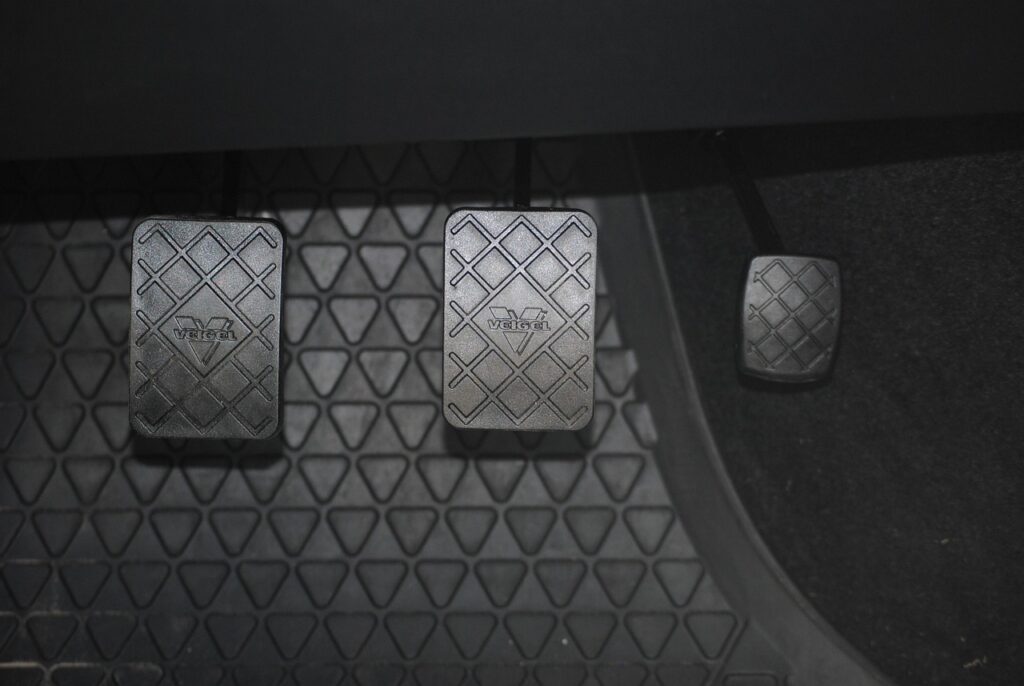
7. **Don’t Press the Brakes Too Hard**
Just as aggressive acceleration can destabilize your vehicle on icy roads, so too can abrupt braking. Stomping on the brake pedal causes your tires to skip over the low-friction surface, leading to an immediate loss of control and initiating a dangerous slide. This abrupt action can be particularly problematic because it often causes the car to start turning as it slides, making the situation far more precarious than a straight-line skid.
The physics of a car slowing down on ice are unforgiving. When you apply too much braking force, the wheels can lock up or lose traction entirely, preventing them from effectively gripping the road. This sudden reduction in rotational speed relative to the vehicle’s momentum creates a rotational force that can spin your car, turning a simple deceleration into a hazardous maneuver. Understanding this is key to maintaining control.
To mitigate this risk, employ a gentle and gradual approach to braking on icy surfaces. If you must slow down, ease your foot onto the brake pedal with consistent, light pressure, allowing the anti-lock braking system (ABS) if present, to modulate the braking force. Avoiding sudden movements is crucial; the goal is to maintain the delicate balance of traction between your tires and the road, preventing any action that would disrupt this equilibrium.
Modern vehicles equipped with anti-lock braking systems (ABS) are designed to assist drivers in these scenarios by preventing wheel lock-up. If your car has ABS, you might feel a pulsing or hear a grinding sound when braking hard on slippery surfaces – this is normal and indicates the system is working as intended, rapidly cycling the brakes to maximize grip. However, even with ABS, the fundamental principle of gentle, controlled braking remains paramount to safely navigating icy conditions.
Read more about: Mechanics’ Top Frustrations: 14 Bad Car Habits You Need to Stop Now to Save Money and Your Vehicle’s Life
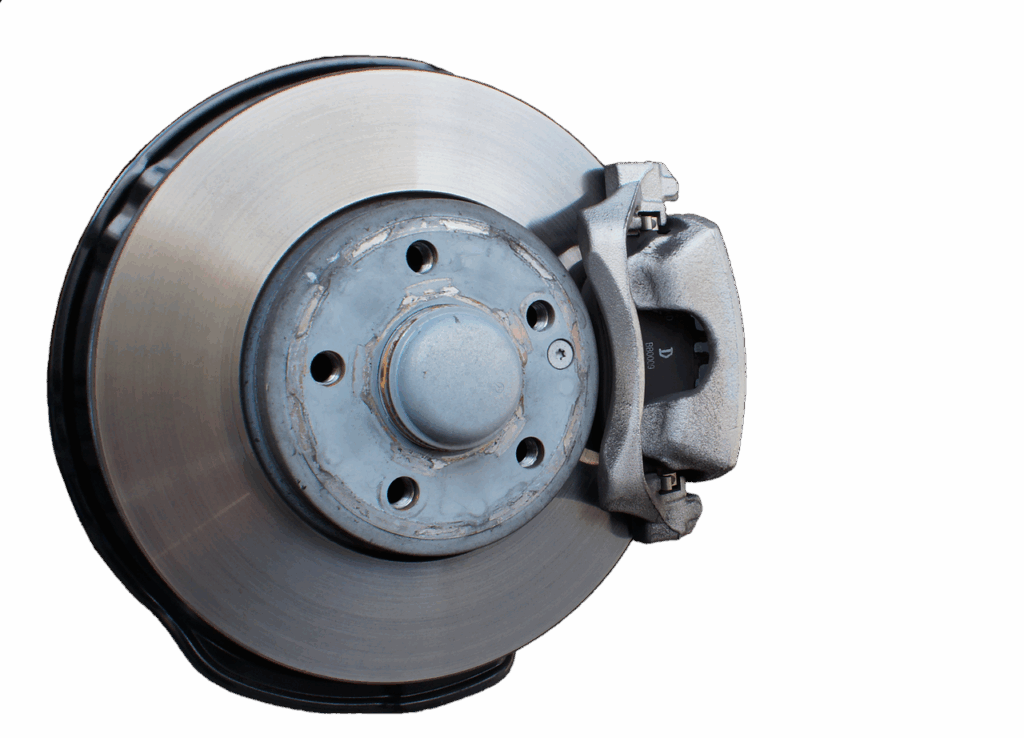
8. **Check Your Brakes**
Before winter sets in, or at the very least, before embarking on a journey in icy conditions, a thorough inspection of your vehicle’s braking system is a non-negotiable safety measure. Healthy brakes are fundamental to controlling your car, especially when traction is compromised. Ignoring potential issues can significantly extend your stopping distance and make an already dangerous situation catastrophically worse.
Several indicators can signal that your brakes are not in optimal condition. One common issue is sponginess, where you must press the brake pedal considerably before you feel any resistance or effective braking action. Thin brake pads are another red flag; when pads become too worn, their ability to create friction and slow the vehicle is severely diminished, demanding immediate replacement.
Audible cues like squeaking when you brake are often a sign that your pads are nearing the end of their lifespan and require urgent attention. Uneven wear on your tires can also point to brake caliper issues, indicating that one caliper might be stuck, causing inconsistent braking force across your wheels. Furthermore, any burning smell emanating from your brakes after use is a clear signal of overheating and potential malfunction, necessitating immediate inspection.
Addressing any of these problems promptly is critical. Driving on ice with compromised brakes means you’re operating with a severe disadvantage, multiplying the inherent risks of winter driving. Proactive maintenance ensures that when you need your brakes the most, they will respond reliably, providing the stopping power necessary to prevent an accident.
Read more about: Mechanics’ Top Frustrations: 14 Bad Car Habits You Need to Stop Now to Save Money and Your Vehicle’s Life
9. **Make Sure Your Tires are Healthy**
Parallel to inspecting your brakes, assessing the health of your tires is equally vital for winter preparedness. Your tires are the sole point of contact between your vehicle and the road, and their condition directly dictates your car’s ability to maintain traction, particularly on slippery surfaces like ice and snow. A comprehensive check before winter driving is an investment in your safety.
Begin by examining the tread depth across all four tires. Adequate tread is crucial for dispersing water and snow, allowing the rubber to make consistent contact with the road. Ensure there’s an equal amount of tread, and critically, check for any low or high spots on the tread pattern, which can indicate uneven wear and compromised grip. If your tread is insufficient, your ability to prevent or correct a slide will be severely minimized.
Beyond tread, meticulously inspect the sidewalls of each tire for any signs of damage. This includes cracks, bulges, or punctures, all of which can compromise the structural integrity of the tire and lead to a blow-out or rapid deflation, which is incredibly dangerous in any condition, let alone on ice. Any visible damage warrants immediate tire replacement to prevent a critical failure.
Healthy tires, with ample and even tread, provide the best possible grip, which is your primary defense against sliding. Combined with the use of dedicated winter tires, which are engineered with specific compounds and tread designs for cold weather performance, ensuring your tires are in peak condition offers a foundational layer of safety that cannot be overstated when facing icy roads.
Read more about: Is Your Bank Account Leaking Money? The 14 Sneaky Hidden Fees You’re Probably Paying (and How to Stop Them!)
10. **Stay Calm: The Secret to Correcting a Slide**
When your car unexpectedly begins to slide on ice, the most crucial and perhaps most challenging action you can take is to stay calm. Our instinctive response to danger is often panic, leading to abrupt, uncontrolled movements like slamming the brakes or wildly jerking the steering wheel. These reactions are precisely what exacerbate a slide, turning a recoverable situation into a potentially severe accident. Maintaining composure is your first, best defense.
The immediate physical response to a slide, once you’ve managed to calm your nerves, is to completely remove your foot from *all* pedals – both the accelerator and the brake. This allows your wheels to move freely, without the added destabilizing forces of engine power or braking pressure. Applying the gas will only cause more wheel spin and less control, while sudden braking will likely worsen the slide, potentially causing your car to spin rather than slide in a more manageable straight line.
Once your feet are off the pedals and you’ve regained a semblance of focus, the “secret trick” to correcting a slide on an icy road comes into play: “turning into the slide.” This technique, also known as counter-steering, means gently turning your steering wheel in the *same direction* that the rear of your car is sliding. For instance, if the back of your vehicle slides to the left, you steer left. This might feel counterintuitive, as your instinct might be to steer away from the slide, but it’s the only way for your wheels to regain effective traction.
The goal of turning into the slide is to align your front wheels with the direction your car’s rear is already moving, allowing the tires to re-engage with any available friction. It’s imperative, however, to avoid overcorrection. A common mistake is turning the wheel too aggressively, which can cause the car to snap back violently in the opposite direction, potentially initiating a series of unsettling oscillations or a full spin. Instead, apply proportionate and gentle steering inputs, adjusting only as much as necessary to stabilize the vehicle.
Furthermore, during a slide, it is vital to shift your gaze from merely looking straight ahead through the windshield to focusing on the actual direction your car is traveling, even if this means turning your head sideways. This allows you to better anticipate where you are headed and make more informed steering corrections. Once the vehicle begins to straighten out on the road, slowly and smoothly straighten your steering wheel, bringing it back to the center position to maintain a stable, forward trajectory. Practice in a safe, empty parking lot can be invaluable for ingraining this life-saving response.

11. **Move Your Steering Wheel Slowly**
Just as with acceleration and braking, the manner in which you operate your steering wheel is critical on icy surfaces. Any sudden, sharp movements of the wheel can easily upset your vehicle’s delicate balance, causing an immediate loss of traction and potentially initiating a spinout. The principle here is consistency and fluidity: all steering adjustments should be made slowly, smoothly, and deliberately.
Think of your steering inputs as a gentle dance rather than an abrupt command. If you abruptly correct your wheel over a patch of ice, you risk forcing your car into a situation where its wheels lose their grip and the vehicle begins to rotate uncontrollably. This is precisely how professional drivers initiate drifts – a sudden jolt to the steering wheel to intentionally break traction. On an icy road, this uncontrolled drift is a recipe for disaster.
To maintain control, avoid any temptation to swerve your wheel. When navigating turns or making minor directional adjustments, ease the steering wheel into the desired position with a steady hand. This allows your tires to adapt to the changing angle gradually, preserving as much contact and friction with the road surface as possible. Quick, jerky motions will only serve to challenge the already limited grip your tires have on the ice.
Practicing this smooth steering technique is an advanced driving skill that significantly enhances safety in winter conditions. By consciously making slow and fluid movements, you minimize the chances of inadvertently breaking traction and sending your vehicle into an uncontrolled slide, ensuring a much safer journey even when road conditions are less than ideal.
Read more about: Mechanics’ Top Frustrations: 14 Bad Car Habits You Need to Stop Now to Save Money and Your Vehicle’s Life

12. **Stay Away from Hilly Roads**
The inherent challenges of driving on icy roads are profoundly amplified when gravity is introduced into the equation, making hilly terrain particularly hazardous during winter. Navigating inclines and declines on ice presents a unique set of dangers that can quickly overwhelm a driver’s ability to maintain control, often leading to unavoidable slides.
When ascending a hill, the combination of a slippery surface and the uphill pull can cause your drive wheels to lose traction, leaving your vehicle struggling to gain momentum or even sliding backward. Attempting to accelerate harder in such a situation only exacerbates the problem, leading to more wheel spin and further loss of control. It’s a common misconception that more speed will get you up the hill; in reality, it only increases the danger if you do lose traction.
Conversely, descending a hill on ice can be even more terrifying. Gravity relentlessly pulls your car downwards, and without sufficient traction, your brakes and steering wheel may offer little to no help in slowing or guiding the vehicle. You could find yourself sliding uncontrollably down the entire length of the hill, with potentially devastating consequences if obstacles or other vehicles are in your path. This is a scenario where the car dictates the movement, not the driver.
Therefore, a crucial strategy for safe winter driving is to plan your route to avoid hilly roads altogether. If a path involving inclines and declines is unavoidable, approach them with extreme caution, maintaining a very slow, consistent speed, and minimizing any sudden inputs to the accelerator, brake, or steering wheel. Recognizing that bridges often freeze first, be extra vigilant when approaching any elevated sections of road, as they are particularly susceptible to ice formation.
Read more about: Buckle Up! 15 Movie Car Chases That Still Take Our Breath Away and Define Cinematic Cool!
Navigating icy roads is undoubtedly one of winter’s greatest driving challenges, but with the right knowledge and disciplined application of these techniques, you can significantly reduce your risk. From proactive vehicle readiness to mastering the art of “turning into the slide” when the unexpected happens, preparedness is your most powerful tool. Remember, the goal is always to prioritize safety, making smooth, controlled movements, and staying alert to the ever-changing conditions. Drive slowly, drive smoothly, and empower yourself with the confidence to handle winter’s worst, ensuring you and your vehicle reach your destination safely.


